All issues

Volume 37, Issue 12
Displaying 1-6 of 6 articles from this issue
- |<
- <
- 1
- >
- >|
-
Seiji ETOH2000 Volume 37 Issue 12 Pages 925-933
Published: December 18, 2000
Released on J-STAGE: October 28, 2009
JOURNAL FREE ACCESSThe mechanisms which lead to recovery of motor function after a stroke are poorly understood. Change of amplitude of motor evoked potential (MEP) is thought to be one of the factors which may contribute to recovery. We have investigated the change of MEPs in stroke patients during conventional and intensive training. The subjects were 27 patients with hemiplegia due to stroke (55.1±13.4 years old, 15.1±12.7 weeks after onset). They received intensive training of the hemiplegic upper limbs for 2 to 6 weeks in addition to the basic conventional training for 2 weeks. After training, Ueda's grade and Brunnstrom stage were improved. Focal transcranial magnetic stimulation (TMS) to the abductor pollicis brevis was followed up by evaluating amplitude of MEPs in 12 patients. The affected hemisphere was marked out over the central area in a 1cm or 2cm grid. TMS were given to 10 to 20 points using a figure-of-eight coil to elicit MEPs in contralateral abductor pollicis brevis muscle. The amplitudes of MEPs were measured peak-to-peak on each hemisphere at rest or under weak voluntary contraction. Based on the change of amplitude of MEP, 12 patients were devided into 3 groups; 1) decreased MEP amplitude group (1 case), 2) increased MEP amplitude group (4 cases), 3) no changed MEP amplitude group (7 cases). In decreased MEP group, the patient recovered to the level of Brunnstrom stage VI. In increased MEP group, the patients recovered to the level of Brunnstrom stage IV or V. In no changed MEP group, the patients recovered to the level of Brunnstrom stage V or VI. Functional outcome of decreased and no changed MEP group was better than that of increased MEP group. These results suggest any relationship between the cortical excitability and the functional recovery after stroke.View full abstractDownload PDF (1249K) -
Takaaki CHIN, Seishi SAWAMURA, Hisao FUJITA, Akio NAKAGAWA, Sakuya NAK ...2000 Volume 37 Issue 12 Pages 934-939
Published: December 18, 2000
Released on J-STAGE: October 28, 2009
JOURNAL FREE ACCESSThe purpose of this research was to compare the energy expenditure and comfortable walking speeds of unilateral trans-femoral amputees using Intelligent Prosthesis with those of healthy non-amputees. The research included ten unilateral trans-femoral amputees with an average age of 28.1 years. Fourteen healthy non-amputees with an average age of 25.2 years served as controls. The energy expenditure during walking at speeds of 30, 50, 70, 90, and 110m/min was measured. The comfortable walking speed was determined as the speed of the highest metabolic efficiency. Results showed that amputees using Intelligent Prosthesis averaged 22.2%, 25% increase at speeds of 70, 90m/min respectively in energy expenditure above normal, and in amputees using Intelligent Prosthesis the comfortable walking speed was the same as normal. These results demon-strated that use of Intelligent Prosthesis significantly lowered the energy expenditure of walking at higher speeds which was very close to the normal pace.View full abstractDownload PDF (1213K) -
2000 Volume 37 Issue 12 Pages 940-1005
Published: December 18, 2000
Released on J-STAGE: October 28, 2009
JOURNAL FREE ACCESSDownload PDF (10851K) -
2000 Volume 37 Issue 12 Pages 1006-1079
Published: December 18, 2000
Released on J-STAGE: October 28, 2009
JOURNAL FREE ACCESSDownload PDF (13576K) -
2000 Volume 37 Issue 12 Pages 1080-1154
Published: December 18, 2000
Released on J-STAGE: October 28, 2009
JOURNAL FREE ACCESSDownload PDF (14008K) -
2000 Volume 37 Issue 12 Pages 1155-1164
Published: December 18, 2000
Released on J-STAGE: October 28, 2009
JOURNAL FREE ACCESSDownload PDF (1264K)
- |<
- <
- 1
- >
- >|